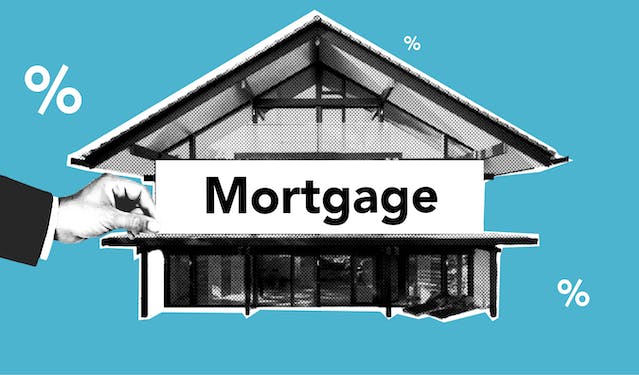2020 was an extremely eventful and volatile year, from the COVID-19 lockdowns, presidential elections to the riots. However, the housing market saw key changes during the year too. Mortgage rates have been steadily declining since the start of the pandemic presenting amazing opportunities for renters to buy homes and homeowners to refinance! Well, now the question stands, is 2021 the year to refinance your mortgage and take that leap of faith? Or should you stay steady in your existing mortgage?
Rock-bottom Mortgage Rates
Mortgage refinancing is the process of getting a new home loan with better terms that replaces your existing mortgage. The biggest reason to refinance is the possibility of getting a lower mortgage rate for the rest of the mortgage. 2020 saw mortgage rates fall dramatically, however, experts predict that the mortgage rates might fall even further in 2021. Currently, refinance rates are as low as 2.25%! So what kind of savings can you be looking at if you refinance your mortgage? Let’s say your mortgage started in 2016, a 30-year fixed $400,000 mortgage, the average mortgage rate in 2016 was 3.6%; your monthly mortgage payment would be $2,915. If you refinance in 2021 at 2.25%, for 25 years, your new monthly mortgage payment will be $2,380. This means you could see $535 in monthly savings as it is approximately 18% lower than your original mortgage payment. You can calculate your total savings using a refinance calculator.
Other Reasons to Refinance your Mortgage
Apart from lower mortgage rates, there are other situations that might make refinancing the right choice for you:
- Alter Loan Term: If you have a 15-year mortgage and feel the monthly mortgage payment is too high, you can always refinance it into a 30-year and have smaller mortgage payments. However, be careful, although you will save initially with the lower monthly payments over time your total interest payments will be higher.
- Cash-out Refinance: Cash-out refinance allows you to borrow funds by accessing the equity you own in the home when you refinance. It is a great strategy if you are refinancing as the cash-out is part of the refinance and you do not need to make separate payments. Cash-out can be used for debt consolidation where you refinance at a low rate and you pay the debt of other items such as credit cards which have very high-interest rate charges.
- Variable-rate to Fixed-rate: Variable rate mortgages have changing monthly payments as the payment is tied to a benchmark index like the prime rate which is tied to the Fed funds rate along with an additional credit spread. If you are uncomfortable with unpredictable monthly payments, refinancing to a fixed-rate mortgage is the solution.
- Remove Insurance: Refinancing can help you get rid of private mortgage insurance (PMI) if you have 20% equity in the home. It is even more important for FHA loans, as these loans require FHA MIP which cannot be removed. The only way to remove FHA MIP is to refinance to a conventional mortgage.
Therefore, apart from the low mortgage refinance rates, there are a variety of other factors that can make you refinance. It is crucial to know these factors because if you were on the brink of refinancing, you can benefit not only from low rates but also from these other benefits. You can check out Daily Prosper for more additional information.
Refinance and Closing Costs
It is important to know that refinancing your mortgage is not free, there are several fees involved and they can range from 3% to 5% of your loan amount. Here is a list of fees:
- Closing Costs
- Mortgage lender fees (application & origination)
- Appraisal fee
- Insurance and title charges
- Escrow charges
The Federal Housing Finance Agency (FHFA) has added a new fee known as the “Adverse Market Refinance Fee” effective December 2020. The fee is 0.5% of the loan amount and has been created to assist government agencies with the costs that arose due to the COVID-19 pandemic. Therefore, refinance fees are a large part of the process and you should ensure you take that into account before refinancing.
Break-even Period
The break-even period is the time when you are not saving during the refinance as you are covering the closing costs. The savings from refinancing result from the lower monthly mortgage payment and smaller interest payments. Initially, you have an outflow of cash as a result of all the refinance costs discussed above, however, once you cross the break-even point, your refinancing decision starts saving you money. This is very important to know because you should not refinance if you plan on leaving the house in a couple of years as the benefits of refinancing will not be effective. However, if you plan on staying in the home, once you cross the break-even point and all costs have been paid, you can see some hefty savings.
In conclusion, there are several factors to consider refinancing in 2021, the biggest reason being the low mortgage rates. However, there are a couple of reasons you should not refinance such as if your credit score has worsened, you don’t have enough home equity, or if you plan to leave the house in a couple of years. In every case, the decision to refinance should be based on your personal financial situation, whereas, the market factors should be an additional factor to consider, not the other way around. 2021 will likely see mortgage rates fall further, therefore, if you do decide to refinance, remember to check several lenders and get the best deal!
